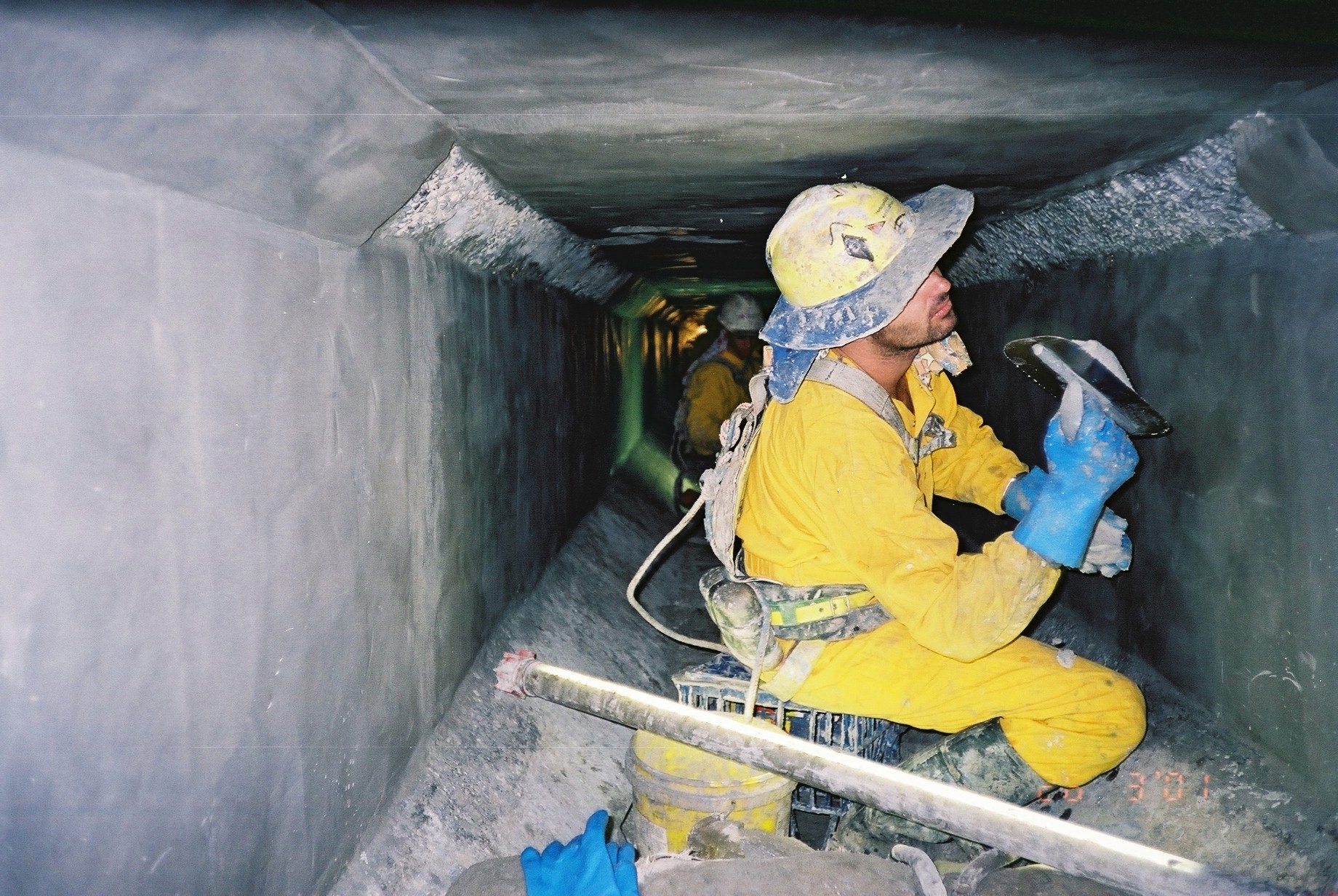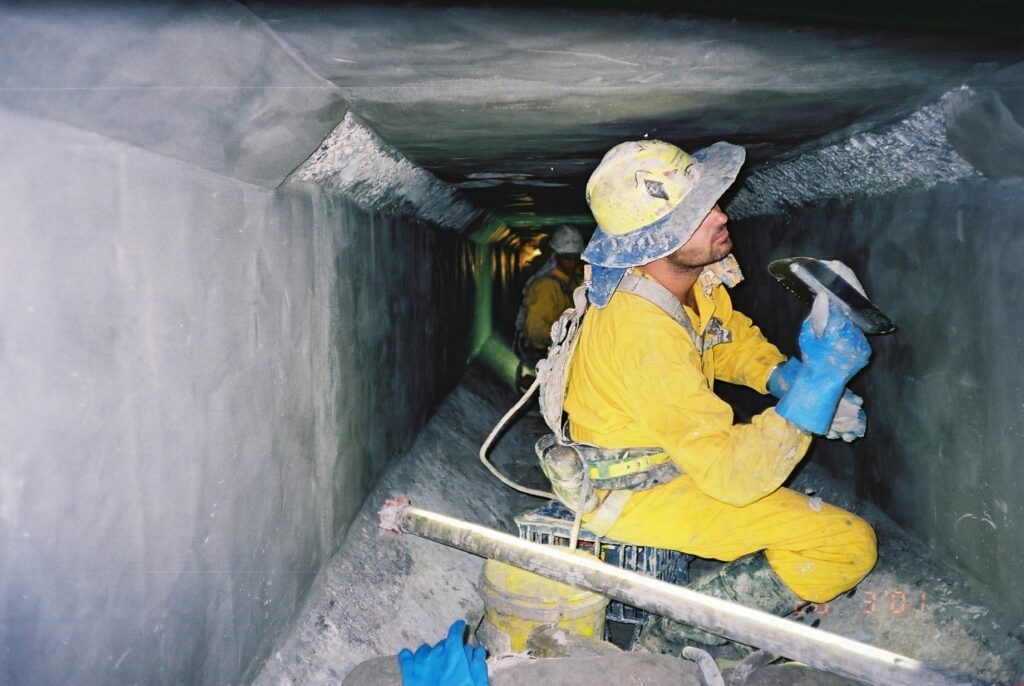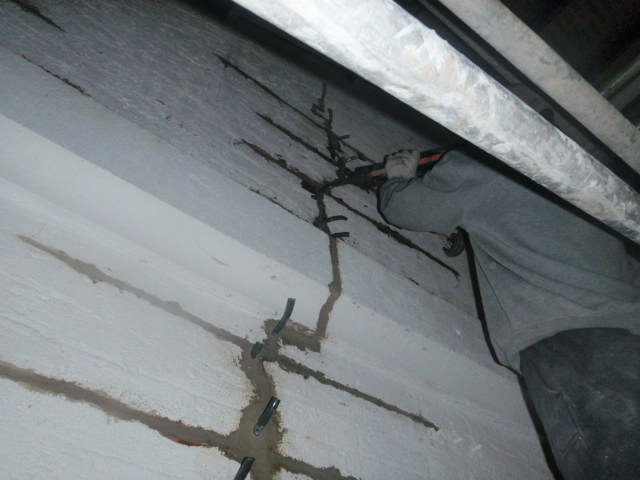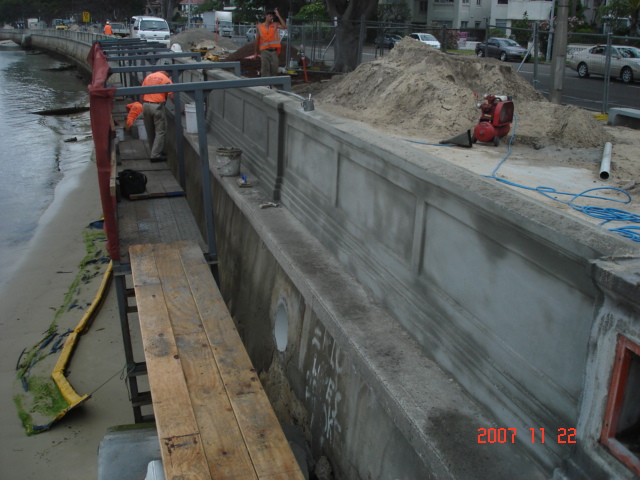
The Basics of Infrastructure Asset Degradation
Introduction
Infrastructure assets like roads, bridges and water systems are the backbone of modern society, enabling the smooth functioning of daily life and the economy. Among these, water and wastewater infrastructure, which includes sewers, tunnels and treatment facilities, plays a crucial role in maintaining public health and environmental safety.
However, like all infrastructure, these concrete assets are not immune to the effects of time and environmental exposure. Over the years, they degrade due to a variety of factors and understanding this degradation is essential for effective maintenance, repair and management.
What is Infrastructure Asset Degradation?
Infrastructure asset degradation refers to the gradual decline in the condition and performance of critical infrastructure over time. This degradation is driven by a combination of factors including age, usage and exposure to environmental and chemical conditions.
For concrete structures, especially those involved in handling water and wastewater, degradation can lead to significant issues such as reduced structural integrity, increased maintenance costs and even failures that can have serious safety and environmental consequences.
Understanding how and why infrastructure assets degrade is crucial for extending their service life and ensuring they continue to perform as required. This understanding allows for better planning and implementation of maintenance strategies, helping to prioritise repairs and allocate resources more efficiently.
Key Factors Contributing to Degradation
Several key factors contribute to the degradation of infrastructure assets, particularly those constructed from concrete and used in water and wastewater applications.
Environmental Factors
The environment plays a significant role in the degradation of concrete infrastructure. Weather conditions such as rain, snow and temperature fluctuations are primary culprits.
Rainwater, especially when combined with pollutants, can penetrate concrete surfaces, leading to increased moisture levels within the material. Over time, this moisture can cause the concrete to weaken, especially if it reaches the steel reinforcement bars (rebar) within, leading to corrosion.
Snow and ice, particularly in regions that experience freeze-thaw cycles, can also cause significant damage. Water that enters cracks in the concrete can freeze and expand, exacerbating the cracks and leading to spalling, where chunks of concrete break off the surface.
Temperature fluctuations, another environmental factor, cause the concrete to expand and contract. Repeated cycles of expansion and contraction can create internal stresses within the concrete, leading to the development of microcracks that can eventually propagate and compromise the structural integrity of the asset.
Mechanical Factors
Concrete structures are subject to a variety of mechanical stresses throughout their service life. Regular use, especially in the case of infrastructure like tunnels and sewers that must bear the weight of passing vehicles or heavy machinery, can lead to physical damage.
Over time, these repeated loads can cause fatigue in the concrete, manifesting as cracks or fractures that weaken the structure.
In addition to regular use, heavy loads can also introduce stress beyond the design capacity of the concrete, leading to structural weaknesses.
For instance, in wastewater systems, the constant flow of water and the occasional surge due to storms or increased usage can exert additional pressure on the concrete, accelerating its degradation.
Chemical Factors
Chemical factors are particularly relevant to concrete structures in water and wastewater infrastructure. Exposure to pollutants and chemicals, which are common in these environments, can accelerate the deterioration of concrete.
Chemicals present in wastewater, such as acids, sulfates and chlorides, can react with the concrete, leading to chemical attacks. This reaction can break down the concrete’s binding agents, causing the material to weaken and erode over time.
Corrosion of the steel reinforcement within the concrete is another critical issue exacerbated by chemical exposure. When chlorides or other corrosive agents penetrate the concrete, they can reach the steel rebar, initiating a process of corrosion that causes the steel to expand.
This expansion places stress on the surrounding concrete, leading to cracking, spalling and ultimately, a significant reduction in the structural capacity of the asset.
Common Types of Degradation
Understanding the specific types of degradation that affect concrete infrastructure is essential for predicting its lifespan and planning maintenance activities.
Corrosion
Corrosion is one of the most common and destructive forms of degradation in concrete structures, especially those exposed to water and chemicals. It is a chemical reaction between the steel reinforcement within the concrete and the environmental elements, particularly chlorides and moisture.
As the steel corrodes, it expands, causing the surrounding concrete to crack and weaken. Over time, this process can lead to severe structural damage, necessitating extensive repairs or even complete replacement of the affected sections.
Fatigue
Fatigue refers to the gradual weakening of materials due to repeated stress and strain. In the context of concrete infrastructure, fatigue manifests as the development of cracks and fractures in the material.
These cracks can start small but grow over time as the concrete is subjected to ongoing loads, such as the weight of vehicles passing over a bridge or the pressure exerted by water flowing through a tunnel. If not addressed, fatigue can significantly reduce the service life of a concrete structure.
Erosion
Erosion is the process of gradual wear and tear caused by natural forces like water and wind. In water and wastewater infrastructure, erosion can be particularly problematic.
The constant flow of water, often carrying abrasive particles, can wear away the surface of concrete structures, leading to a thinning of the material and the eventual exposure of the reinforcing steel. This not only weakens the structure but also makes it more susceptible to other forms of degradation, such as corrosion.
The Importance of Understanding Asset Degradation
Understanding how infrastructure assets degrade is crucial for several reasons. First, it allows for more accurate predictions of the expected service life of the asset.
By understanding the rate at which a structure is likely to degrade, maintenance teams can plan interventions at the optimal time, preventing costly failures and extending the life of the asset.
Second, understanding degradation helps in prioritising maintenance, repair and renovation efforts. Not all assets degrade at the same rate or in the same way, so having a clear understanding of these processes allows for more effective allocation of resources. This ensures that the most critical repairs are addressed first, minimising the risk of unexpected failures.
Finally, understanding asset degradation is essential for optimising resource allocation. Maintenance budgets are often limited, so it is important to allocate funds in a way that maximises the return on investment.
By focusing on the most vulnerable assets and using data-driven approaches to prioritise maintenance activities, organisations can ensure that their infrastructure remains safe and functional for as long as possible.
Key Components of Asset Degradation Modelling
To effectively manage infrastructure assets, organisations must use sophisticated models that can predict how these assets will degrade over time. These models rely on several key components:
1. Data Collection and Analysis: Accurate data on the current condition of the infrastructure is essential for any degradation model. This data is collected through regular inspections, monitoring systems and testing. Once collected, the data is analysed to identify patterns of degradation and to assess the effectiveness of past maintenance efforts.
2. Deterioration Forecasting: Using the data collected, models can forecast how the asset will deteriorate over time. These forecasts are based on factors such as the material properties of the concrete, the environmental conditions and the expected loads. Deterioration forecasting allows maintenance teams to plan interventions at the most effective times, reducing the risk of unexpected failures.
3. Risk Assessment: Risk assessment is a critical component of asset management. It involves evaluating the potential consequences of asset failure and the likelihood of different types of degradation occurring. By understanding the risks associated with different assets, organisations can prioritise maintenance activities and allocate resources more effectively.
Effective Asset Management Strategies
To combat the inevitable degradation of infrastructure assets, effective management strategies must be implemented. These strategies include:
1. Regular Monitoring and Inspection: Ongoing monitoring and regular inspections are essential for detecting early signs of degradation. This allows for timely interventions before the damage becomes severe.
2. Implementing Preventive Maintenance: Preventive maintenance involves carrying out small-scale repairs and interventions before major issues arise. By addressing minor problems early, the overall lifespan of the asset can be extended, and costly repairs can be avoided.
3. Utilising Advanced Modelling Techniques: Advanced modelling techniques, such as predictive analytics and machine learning, can help organisations better understand and manage infrastructure degradation. These tools allow for more accurate predictions of future degradation and more effective planning of maintenance activities.



Conclusion
Infrastructure asset degradation is a complex process influenced by a variety of environmental, mechanical and chemical factors. For organisations responsible for managing water and wastewater infrastructure, understanding these basics is crucial for maintaining the safety, functionality and longevity of their assets.
By implementing effective asset management strategies and partnering with experts like Metrocorp, organisations can better manage their infrastructure, extend its lifespan and ensure optimal performance.